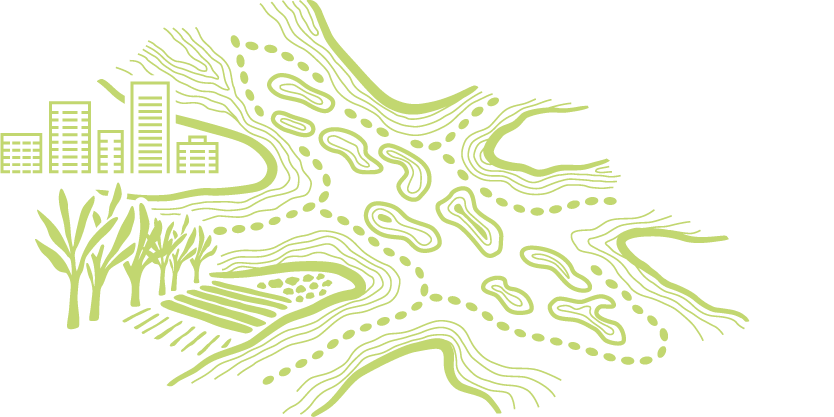The 8 identified direct uses of the Region expose the Reef’s values to a variety of impacts at a local scale and cumulatively. When coupled with the highest and most immediate threats to the Reef, such as sea temperature increase and altered weather patterns, the impacts of direct use are amplified. Activities such as tourism, defence, ports and research tend to be localised, whereas fishing, recreational use and shipping are more widespread. The effectiveness of the current management tools for the main types of direct use in, and adjacent to, the Region are assessed in Chapter 7.
Damage from direct use can be permanent or temporary. Permanent change is usually a result of modifications to coastline and island habitats from coastal development, or port and marine infrastructure activities. By contrast, direct use impacts that can kill and injure coral, such as anchoring, are usually temporary and smaller in scale. Damaged areas can return to a pre-disturbance state if recovery times are adequate. Accidental and intentional handling and manipulation of benthic organisms can lead to localised damage to the reef structure and increase the prevalence of outbreaks of disease.1949
Commercial marine tourism, fishing and recreation activities in some locations may interact with other uses — incompatible uses (with incompatible values) can affect or displace another user group. Displacement concerns have been raised between commercial marine tourism and Traditional Owners, recreational fishing and commercial marine tourism, and in terms of resource allocation between recreational and commercial fishers.
Defence activities continue to have localised impacts in and adjacent to the Region, including from unexploded ordnance and firefighting foam containing PFAS. The acute and chronic impact of PFAS chemicals on plant and animal communities is still unknown.
Marine debris is a threat to wildlife 1950 and is an emerging threat to the Region as the global human population increases (Section 6.2.1). Direct uses have the potential to add marine debris to coastal, island and marine habitats. Understanding of the quantity and ecological effects from microplastics in the Region is improving, although gaps remain (Section 6.5).
The number of reported vessel strikes on species of conservation concern is generally low. Surface-breathing marine animals, such as marine turtles, dugongs, dolphins and whales, are the species most often struck by vessels, with the collision often resulting in injury or death. Population growth in regional communities is a driver of human-induced impacts on the Region. More vessel use, larger ships and expansion of direct use activities are likely to increase wildlife disturbance across the Region.
Even though procedural controls are in place to respond to oil spills and some chemical spills, the Region remains vulnerable to vessel groundings and large spills of other foreign material (diesel and other cargo). Shipping (and other vessels greater than 50 metres in overall length), international fishing and recreational vessels (predominantly yachts) are vectors for introduced exotic species. If introduced and persistent, introduced species can have widespread effects on the ecosystem. Although limited pest incursions have occurred at ports and marinas since 2019, islands remain vulnerable.
Dredging and disposal of dredge material in inshore areas contribute to sedimentation by disrupting and resuspending sediments. Dredge disposal for reclamation may directly affect tidal inshore habitats, such as seagrass meadows.1951 A growing shipping fleet and increased coastal development (including from ports) can increase artificial light into the Region.
Fishing is the single largest extractive activity in the Region. Target and non-target species from various trophic levels are directly removed from the ecosystem, with predatory fish being disproportionately targeted in the Region. Indirectly, other species and habitats may also be affected through anchor damage and damage to the seafloor (from trawling). Across the range of threats and impacts from fishing, incidental catch of species of conservation concern, such as dugongs, inshore dolphins and some species of sea snakes, marine turtles, sharks and rays, still persist under current management. However, changes in gillnet fishing may reduce this impact in the future. Dugong and turtle populations remain depleted following past commercial harvesting and are further threatened by climate change. These species remain vulnerable to entanglement and drowning when they interact with legal fishing gear, marine debris or illegal fishing and extraction. Illegal fishing in no-take zones and harvest of fish smaller or larger than relevant size limits can be perceived by fishers as a one-off, short-term impact. However, illegal fishing can have long-term impacts on biodiversity given some species take many years to reach sexual maturity (Section 8.3.4).


